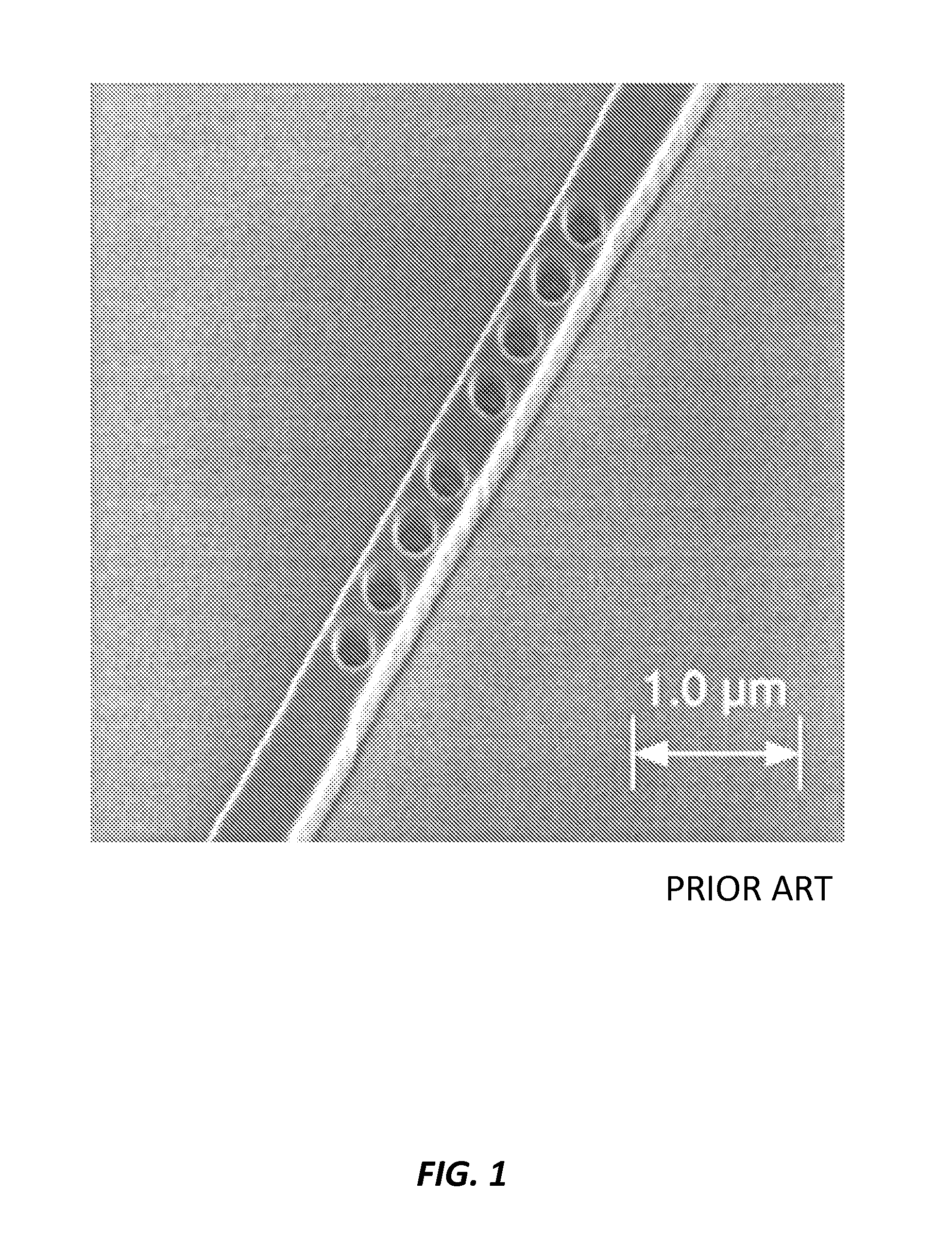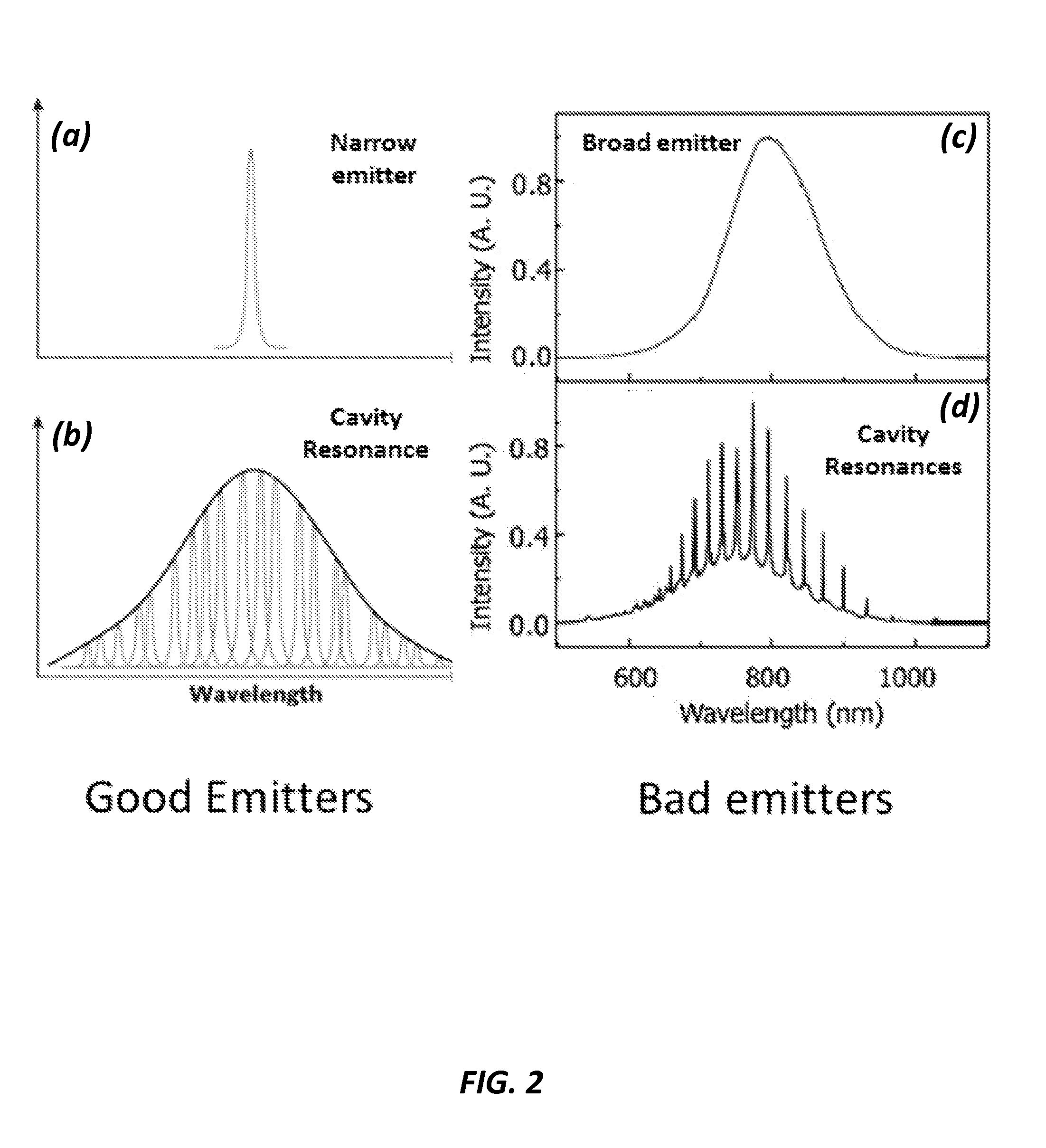Confocal and Concave 1D Photonic Crystal Resonant Cavities with Ultra-low Mode Volume
a photonic crystal and cavity technology, applied in the field of 1d nanobeam photonic crystal cavity structure, can solve the problems of low refractive index materials, incomplete photonic band gap in bragg stacks, and only valid design of such cavities,
- Summary
- Abstract
- Description
- Claims
- Application Information
AI Technical Summary
Benefits of technology
Problems solved by technology
Method used
Image
Examples
Embodiment Construction
[0023]The current invention includes nanoscale scale devices and methods that shape the periodicity in a photonic crystal cavity affecting the Q factor and mode volume. In one example, devices with the confocal, concave and flat hole designs onto a 1D nanobeam structure in silicon rich oxide are provided. The highest obtained Q factor was greater than 35000 while the lowest mode volume obtained was 0.3 (λ / n)3, which is more than 3 folds lower than previous results. The hole shapes also affect the mode shape and allowed the reduction of mode volumes below any previous report for silicon rich oxide.
[0024]One of the advantages of this invention is that it provides lower mode volume over other designs, while maintaining the field maxima in high index material. Thus making it possible to create lasers out of poor emitting materials or increase light matter interaction. Electronic or biological materials that are widely used, but have poor emissive properties, benefit from such design.
[00...
PUM
 Login to View More
Login to View More Abstract
Description
Claims
Application Information
 Login to View More
Login to View More - R&D
- Intellectual Property
- Life Sciences
- Materials
- Tech Scout
- Unparalleled Data Quality
- Higher Quality Content
- 60% Fewer Hallucinations
Browse by: Latest US Patents, China's latest patents, Technical Efficacy Thesaurus, Application Domain, Technology Topic, Popular Technical Reports.
© 2025 PatSnap. All rights reserved.Legal|Privacy policy|Modern Slavery Act Transparency Statement|Sitemap|About US| Contact US: help@patsnap.com



